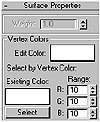| ISO 9000 | ISO 14000 |
 GMP Consulting |
Mood LightingYou can use lighting to create moods in different ways. You can apply colors or use stark angles, projecting interesting shadows. Consider the story you’re telling and how to add drama. One way to affect mood is through the use of cool and warm lighting. Cool colors are colors that tend toward blue—the colors in the green-blue-violet range. Warm colors are colors that tend toward yellow—the colors in the red-orange-yellow range. Cool colors have been found to slow down viewers’ circulation, causing a drop in body temperature, while warm colors stimulate viewers’ circulation and a rise in temperature. Consider this when creating peaceful or suspenseful scenes. Accent LightingUse accent lighting to create the real-world lighting effects needed for specific situations like sconce lighting, neon, or architectural floods. For pools of light on a floor or across a table, try using gobos (lights with a projection map) for faked shadows. If you want to try to simulate the level of ambient bounce light (light reflected between objects) of the real world, you will either have to use hundreds of lights with low multiplier values or get a radiosity renderer through a company like Lightscape. Radiosity calculates the lighting and colors of bounce light between all your surfaces, as you see in real life. It can create very believable lighting but does take a lot of time. Lighting for the CameraWhy drive yourself crazy trying to get all the lights perfect in every room or scene, only to have the camera move through the space in 3 seconds? Leave the lighting and materials work until after the animation and camera movements are correct. When the camera work is done, go back and start adding lights only to those areas that will be seen by the camera. Light only what you see, and make sure your materials and lighting work together to create the style and mood you want. This technique will save you time lighting and will also get you to think about exactly what you want the camera to see. Using Vertex Colors to Replace LightingA technique used in games to reduce the burden of lights on calculating in real time is to simulate shadows on surfaces with vertex colors. You can “paint” your models by assigning colors to different vertices under the Surface Properties rollout of the Vertex sub-object level of an editable mesh. You click the Edit Color swatch and assign a new color. You can also use the Assign Vertex Color utility to assign vertex colors for you, based on lighting you’ve already set up. (You can then delete the light.) You need to assign materials to the objects, select them, and check Vertex Colors under Properties. Then open the Assign Vertex Color utility (Utilities Ø More Ø Assign Vertex Color) and click the Assign to Selected button. Keep in mind that this will preserve shadows and lighting from one lighting setup only; if a light moves or changes, the shadows will not look right. It’s used as a quick fake. SummaryIn this chapter we discussed the features of 3D Studio MAX lights; the key settings for each type of light; possible techniques for using lights in various situations; and the use of color and its implications in a MAX scene. We put this into practice with exercises that made use of lighting techniques, colors, and light placement. Additionally, we have explored some traditional artistic techniques and fundamental color theory as it relates to MAX and 3D graphics. In the next chapter, we will cover the Rendering menu. We will explore atmospheric effects in more detail and check out the new Render Effects option for lens and filter effects. We will look in detail at different render settings and their results. You’ll learn how to distribute a render over a network and use the new RAM player. Finally, we will work on a complete project from modeling through rendering.
© 2000, Frol (selection, edition, publication) |
|
|

